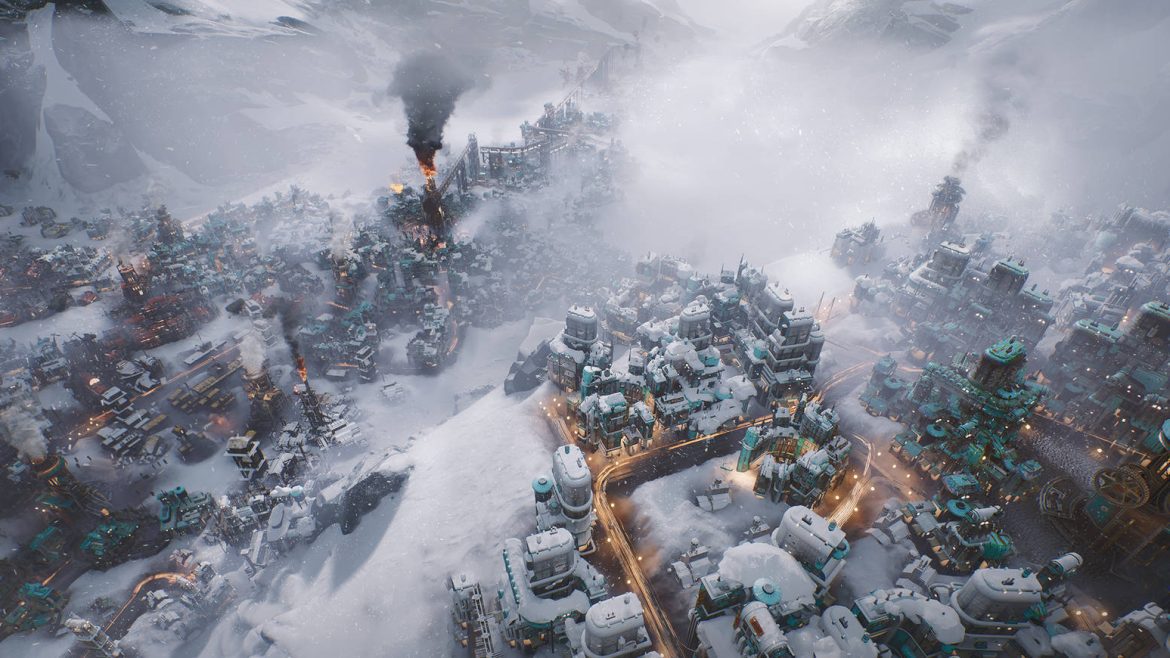Frostpunk 2 – It’s been 6 years since Frostpunk was released, and in those 6 years, there hasn’t been a game that really “resembles” the feeling that Frostpunk brings.
Calling itself “Survival Society”, Frostpunk is a perfect blend of intelligent storytelling, city building and management systems that are not too detailed but still have enough weight to balance with a highly “counterbalanced” setting like a post-apocalyptic ice age world.
Through such solidly designed and harmonious elements, if there was a game in the world that could be considered perfect, Frostpunk would be one of the closest, however, such tight harmony also comes partly from the game’s very small scale.
At its core, Frostpunk ’s story is about a very small community struggling to survive in a very short period of time. And while the game does a great job of portraying the psychological and human toll of this process, Frostpunk still raises some very serious questions about the future, and each playthrough often ends with a painful question about the next generation.
Of course, Frostpunk does not stop with the story of “A New Home” of the city of New London. Over the past 6 years, the Frostpunk formula has been continuously added and improved with expansions of varying quality, but still valuable in improving an extremely excellent “core” game.
And the question of Frostpunk ‘s “legacy” is now “placed on the shoulders” of its sequel Frostpunk 2 .
So, after 6 years of development, will Frostpunk 2 be strong enough to “carry” the thousand-pound legacy of the first part? Or will the pressure and ambition of this game drown it in a “sea of snow” like the unfortunate residents of Winterhome?
Pick up the charcoal lamp and find out with MarkGame in the following article.
YOU WILL LIKE
Industrialization, Modernization and… Complexity!
The first thing players notice when starting Frostpunk 2 is… how much bigger the game is compared to the original. The great city of New London that players spent dozens, hundreds of hours building over months is now just… a small dot in the middle of the map.
No longer are the simple, specific structures built one by one like in part one, players can now build giant districts with a few clicks, with each district having a certain role, namely agricultural areas, residential areas, processing areas and resource exploitation areas.
Not stopping there, the scale of time and labor of the game also increased a lot. Time is now not measured in days but in weeks, and the workforce and population are no longer in the tens or hundreds but now in the thousands, even tens of thousands of people.
All districts, including residential areas, require hundreds of workers to be there to work and maintain, and if the player upgrades that district with certain buildings, the required number of workers can double or triple, and even seemingly small and immediate actions like “frostbreaking” to lay building foundations can require 200 workers to work for weeks at a time.
Not stopping there, the exploration and outpost building mechanics for resource exploitation are also significantly expanded, as players must build roads between the outpost and the city, manage a completely new human resource to carry out expeditions, and even manage two sub-cities at the same time with a scale not inferior to New London, with completely separate demand and resource indicators.
The massive scale of Frostpunk 2 also makes running the city, as well as the resources players have to keep track of, more… difficult.
Critical resources such as fuel (coal) and food still appear in part two, some are even simplified as wood and steel become materials, and labor is no longer divided into unskilled and skilled labor.
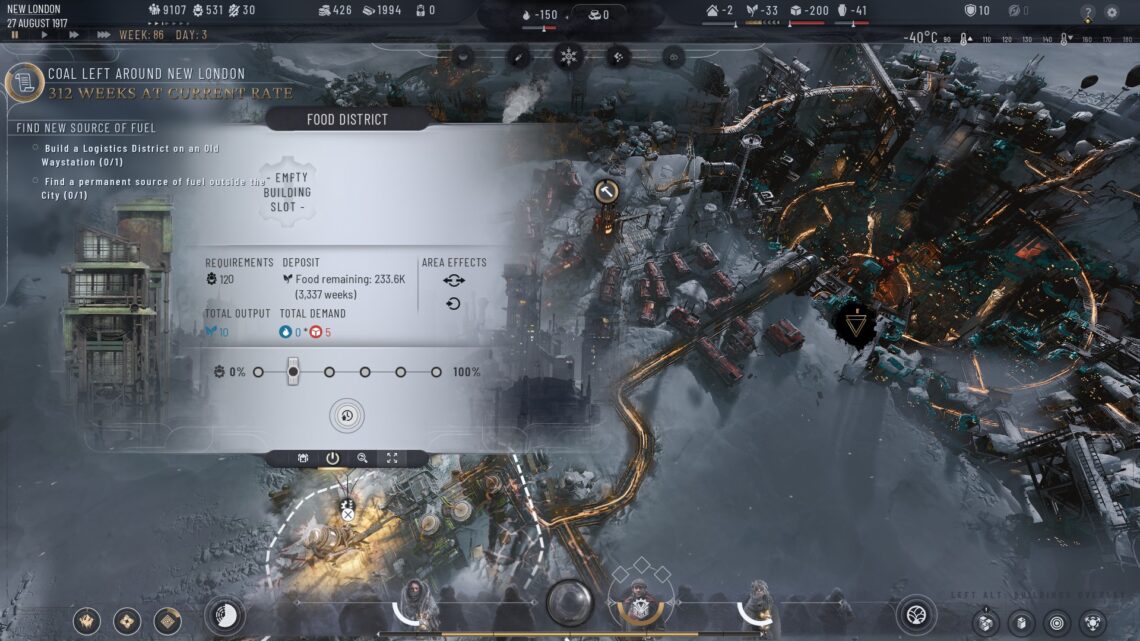
Not only that, resource indexes are now automatically calculated by the game for players, taking supply minus demand so players can easily know how much surplus or deficit there is.
But don’t be too happy, this “simplification” is so that players don’t get too overwhelmed when having to “juggle” with other resources, specifically goods, construction materials (prefabs), currency (heat stamps), and labor. The simplified labor is also so that players can manage professions that were originally in part one but have now been greatly expanded, such as Frostlanders or guards.
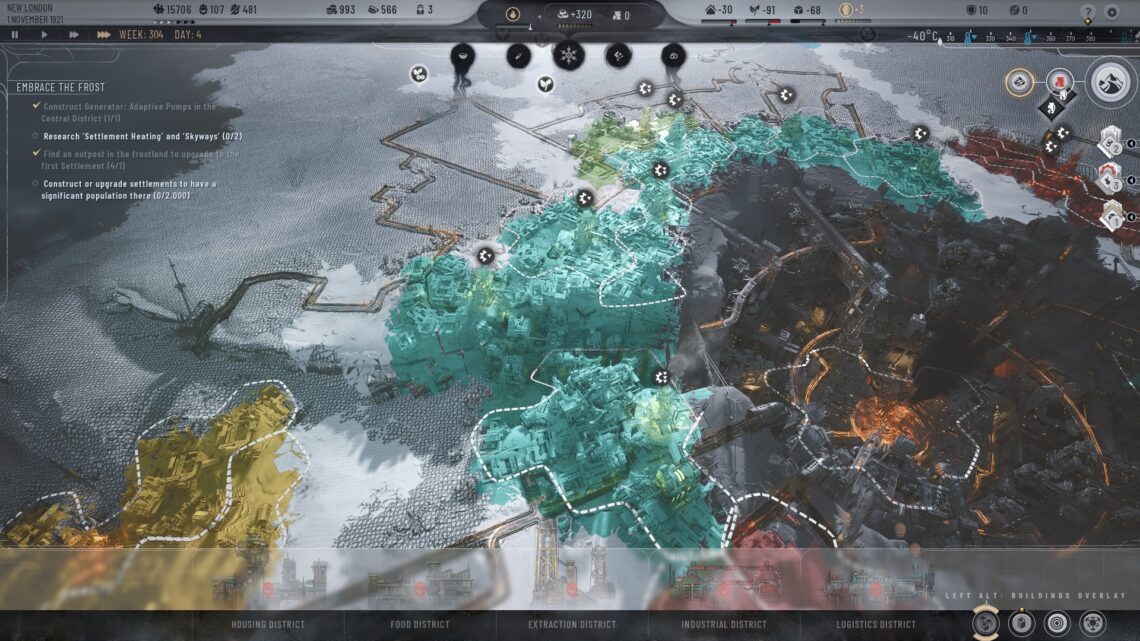
Not stopping there, the needs of the people are no longer limited to food, warmth, shelter and health, but now the player will have to manage two additional needs: the quality of infrastructure maintenance (squalor) and crime (crimes), each of which is determined by very specific and “new” factors such as: the quantity of surplus goods and raw materials, reserves.
Just telling this “foggy” story shows how massive the scale and complexity of Frostpunk 2 is compared to the original, and the way 11 Bit Studios handles these additions is extremely skillful, because they have designed systems that are really tight and closely related to each other, constantly affecting each other in one way or another.
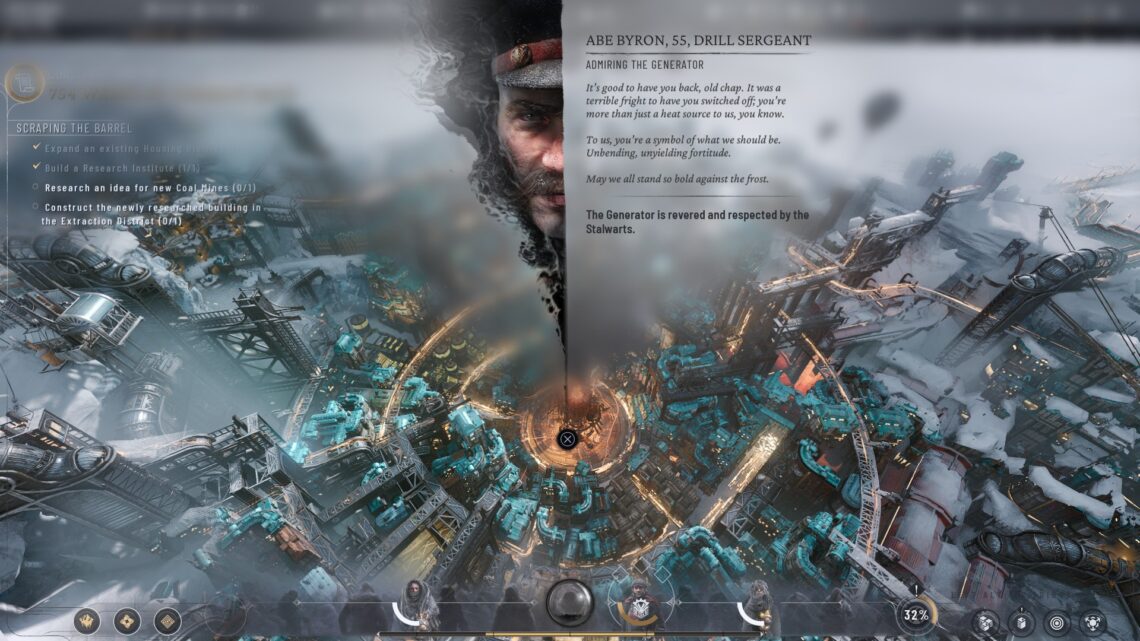
Each “variable” in this system will be determined by sub-variables, with increases and decreases directly dependent on other variables in the system. For example, the two new demand points in part two (squalor and crime) are particularly “headaches”, because they are closely related to all the remaining activities of the city, for example, infrastructure that is not maintained will cause production and exploitation to stagnate, or high crime will cause the stress index and trust of the people to become higher, causing social activities such as law making and research to become more stagnant.
These systems constantly influence and interact with each other, creating a continuous loop, causing the city’s condition to always decline and the player must constantly balance between different resources to minimize human and property damage caused by the environment and activities, while still creating surplus value to prepare for the big storms that are constantly waiting.
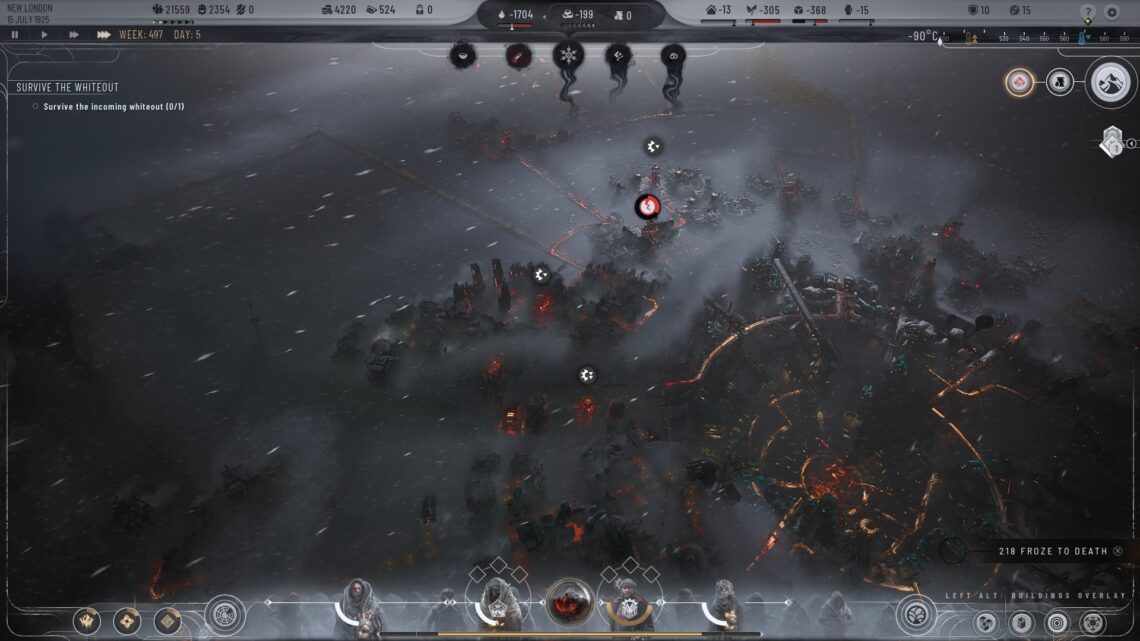
However, it is these intricate systems that create the “soul” and extremely special appeal for Frostpunk 2 , because throughout the process of exploring the game, players will continuously find new special relationships between the variables in the game, and by gradually understanding those relationships, it will create a valuable and very addictive “learning to play the game” experience, easily making players restless to think of new strategies, untangle new knots and contemplate new approaches.
Throughout the game, players will continually discover new, unique relationships between game variables, and by gradually understanding those relationships, it creates a valuable and highly addictive “learning to play” experience.
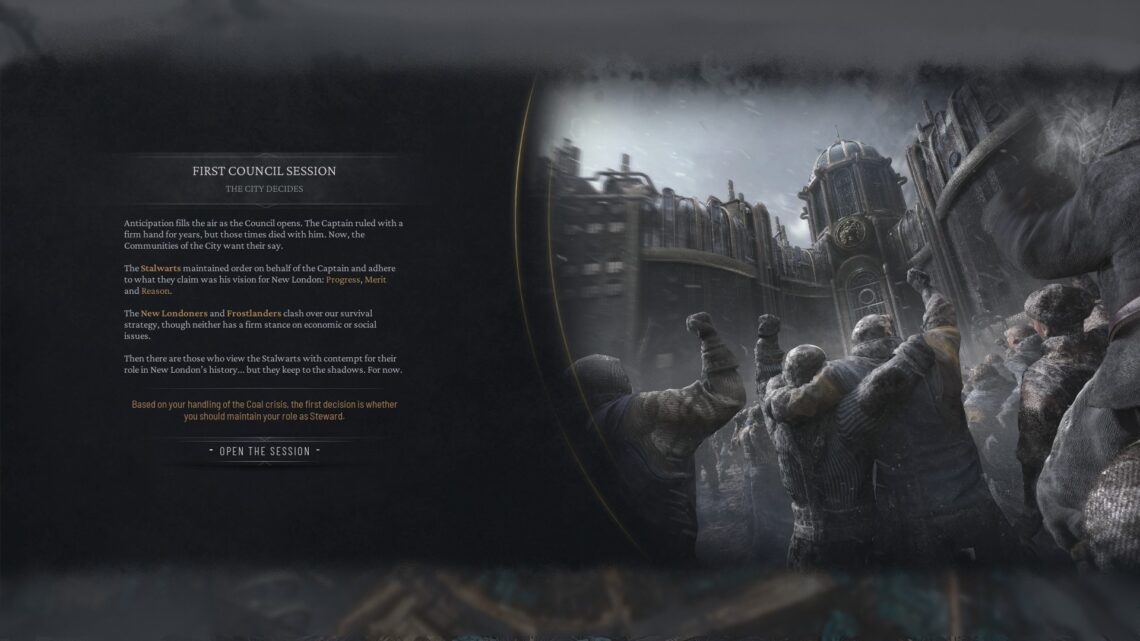
White Snow, Black Oil and Red Lines!
Of course, similar to the first part, the resource problem is only a small part of the game, because in the main story of the game, the player only loses when the people “overthrow” them. And now, 30 years after the events of the first part, the player takes over a more prosperous, stable New London, from which the democratic state as well as political factions and ideological divisions begin to appear – and the player no longer simply has to “balance between hope and discontent”, but the problem here is “resolving conflicts and building trust”.
The political system is a new and invaluable addition to Frostpunk 2 , and it serves as a complement to two other familiar mechanics: upgrading technology and enacting laws.
Now, the residents of New London are divided into four to six distinct factions with clear left and right wings, with specific, sometimes opposing, ideologies and agendas, and above all, with extremist elements.
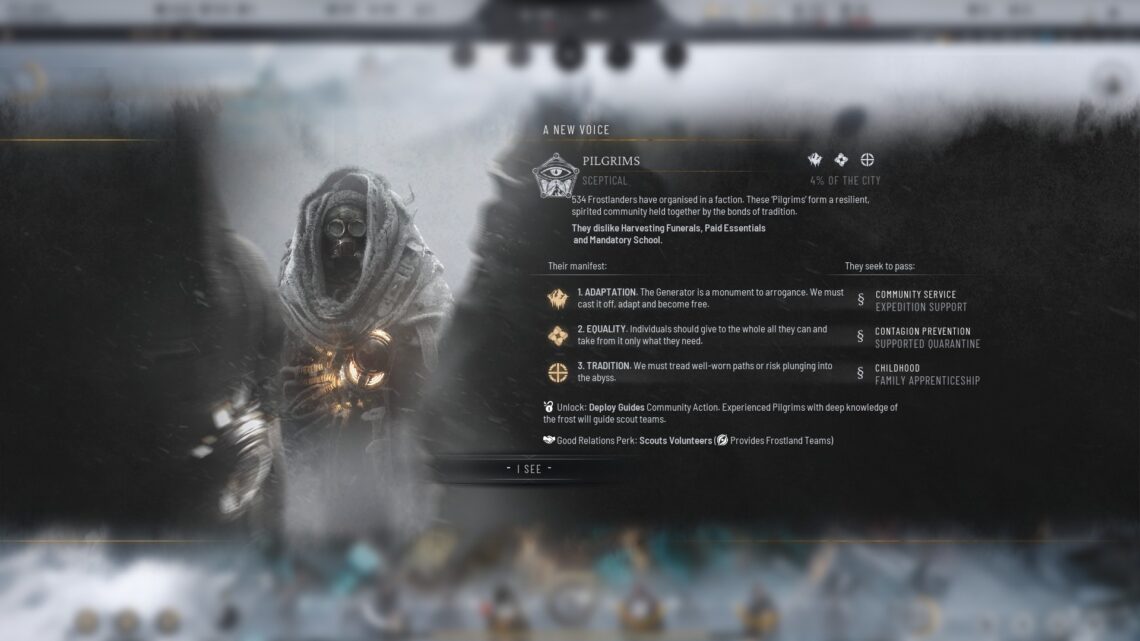
These political factions are also closely related and play an important role in expanding the law-making and technology development mechanisms that have been present since the first part. In terms of technology research, most technology upgrades allow players to choose a specific research direction, with different advantages and disadvantages, but most importantly, each research direction will be supported by a different political faction in the city.
For example, in terms of commodity production upgrades, the conservative “survivalist” faction would advocate that players focus on reusing and recycling surplus materials, which would reduce the city’s demand for raw materials but increase the risk of disease, while the progressive “technocrat” faction would advocate that players take a technological upgrade approach to increase the efficiency of commodity production, consuming less labor but requiring more frequent maintenance and consuming more materials.
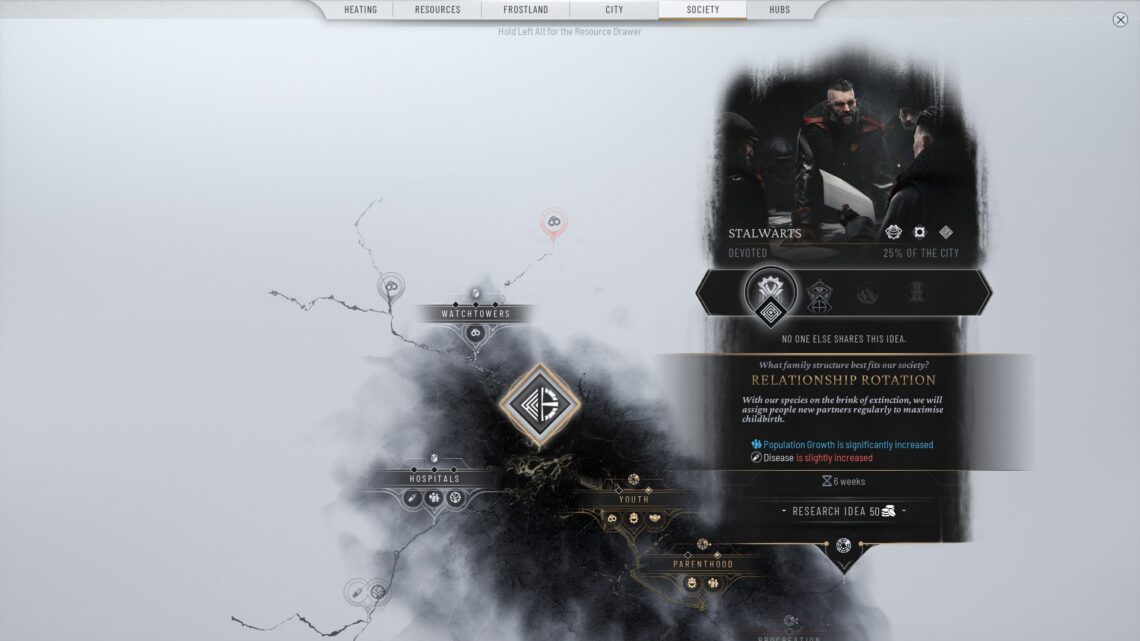
This makes every player’s technology investment choice a headache in terms of data, resources, politics, and people.
However, the game’s political faction mechanics go beyond simply controlling conflict and trust, and directly affect how the city operates, as many of the technologies players research won’t take effect until they become law, and this is where the real “political game” begins.
For a law to pass, it needs a majority of votes in parliament, that is, 51 out of 100 votes.
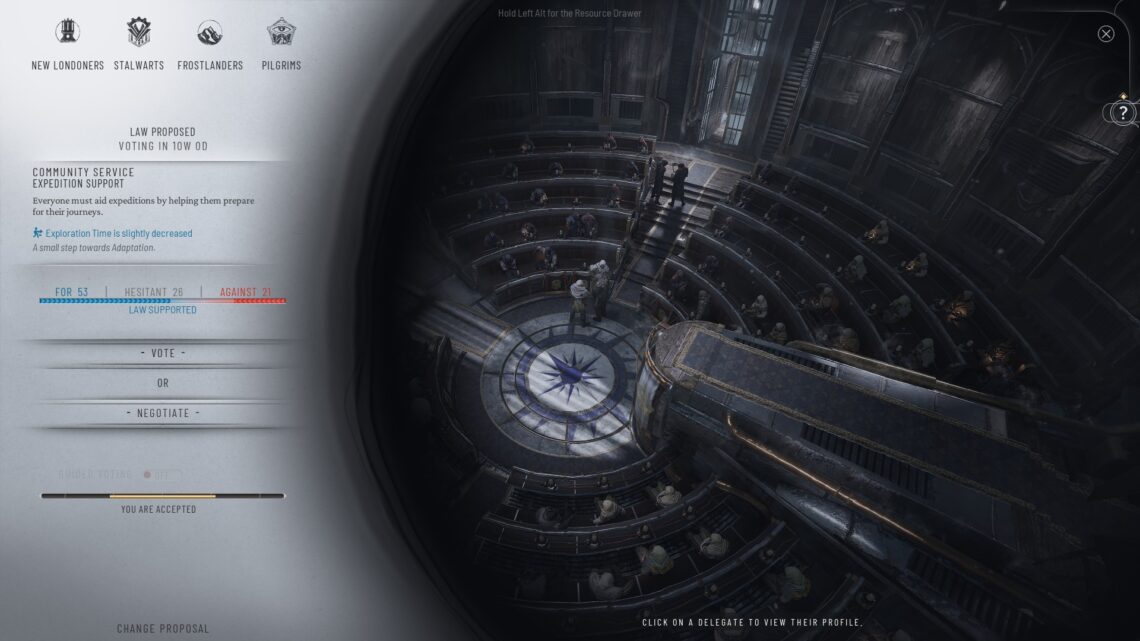
And this is the most interesting and special mechanism that Frostpunk 2 brings, because this democratic parliament mechanism is both a “test” of the player’s political schemes and a key point in the player’s social management process.
Depending on the population ratio, each faction will have a certain number of seats in parliament, with members of the right and left wing tending to agree or oppose certain technologies and laws – but everyone has their own price, and players will have to negotiate directly with these factions to be able to pass beneficial laws, or prevent harmful laws during the game.
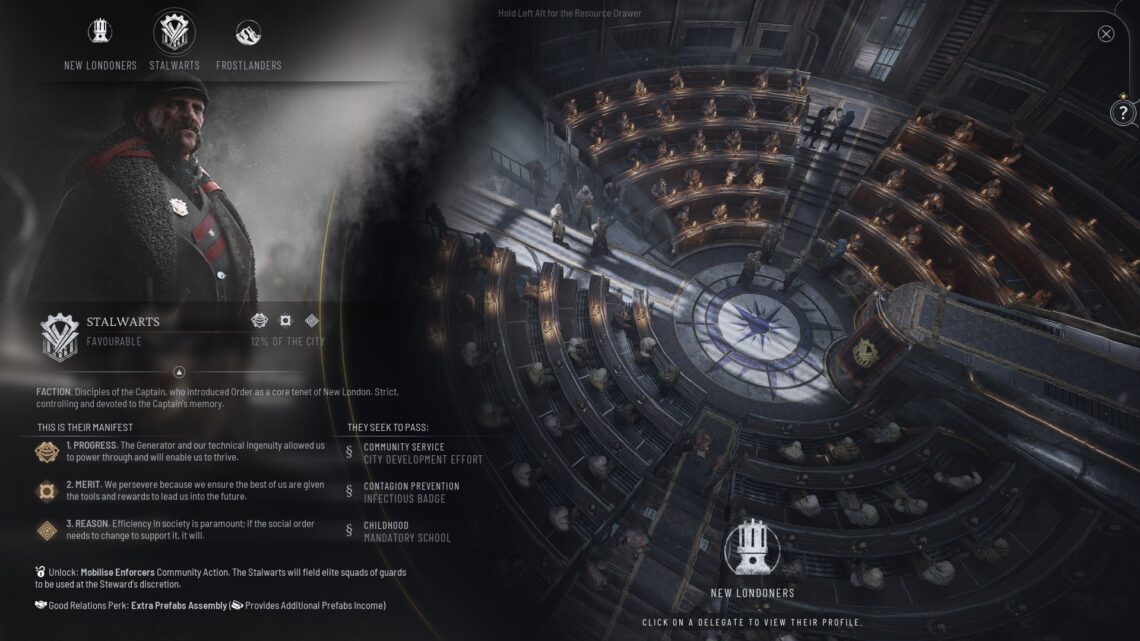
Negotiations can involve players making promises, publicly supporting a political faction, granting parliamentary presiding power to the political faction to make their own laws and hold elections, or even simply “bribing” them with money.
Clever negotiation can make that political faction trust the player more, but if the player accidentally… makes empty promises, or does something that goes against their will, then trust and conflict will immediately skyrocket, and there will be many times when the player will have to make extremely difficult and dangerous choices like that to preserve the survival of the city, especially in the midst of a time when the treasury or resources are depleted.
Promises, political intrigue, laws, and conflicting ideologies will escalate as players make new laws or adopt new technologies, and there will come a time when players will be forced to choose between moderation or extreme policies, between short-term gains or long-term gains, between powerful and extremist minorities, or the voice of the people.
…this is the most interesting and special mechanism that Frostpunk 2 brings, because this democratic parliament mechanism is both a “test” of the player’s political schemes and a key point in the process of social management.
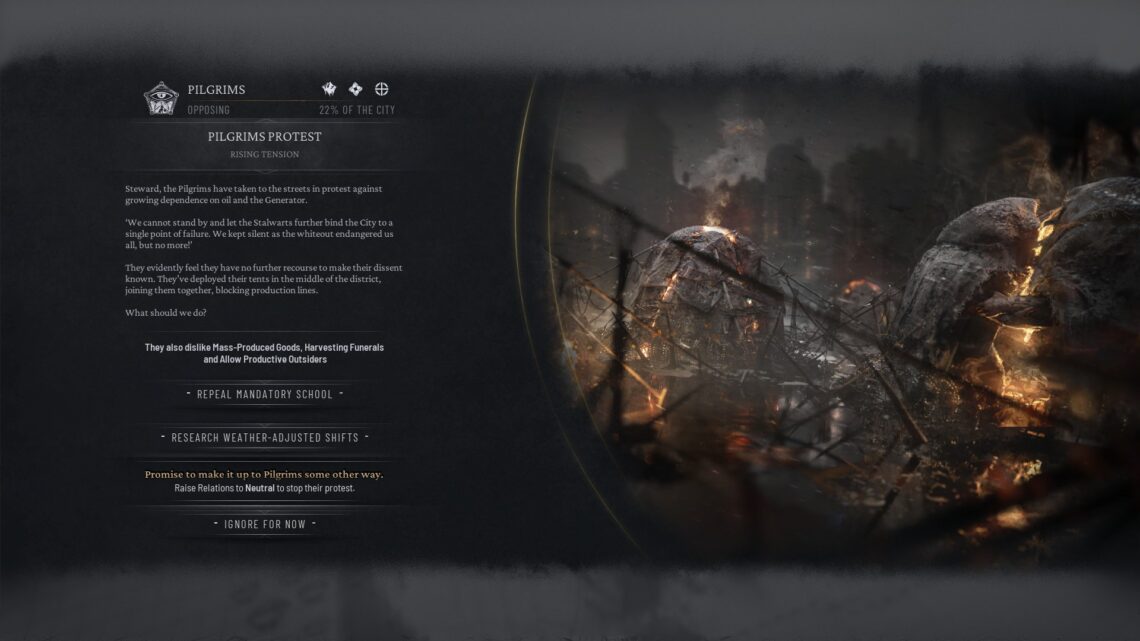
The choices the player must make become increasingly difficult, the events that take place in the city become more extreme, the conflict will inevitably escalate and boil over, and then the player will be forced to face the most dangerous challenge to the city: civil war – and no matter how the civil war ends, no matter what the fate of the city, the player will surely be haunted by his moral choices during the game, with regrets, remorse for the wrong choices, or pride, joy that comes from the right choices.

Frostpunk 2 has been extremely successful in building extremely detailed political, legal and technological systems, then blending them together to create a tight, continuous and intimate connection with resource exploitation systems, infrastructure and social variables.
All of these systems blend together into an incredibly tight structure that feels incredibly complete and consistent throughout the gameplay, but also portrays powerful moral choices simply from the way the game operates.

A New World of Awesomeness!
And the last but not least valuable improvement that Frostpunk 2 brings is the way the game is “displayed” to the player.
Frostpunk 2 is bigger, more massive, and much grander than the first one, and the game’s audio-visual-reading experience reflects those elements beautifully.
The massive scale and fast-paced time of Frostpunk 2 will make the “closeness” of the first part somewhat lost, when players rarely see each resident working hurriedly or the constructions being slowly built in a very enjoyable way, instead there are constructions close together, full of details built in unison at a dizzying speed!
The roads are densely decorated with faint streaks of light, depicting the dizzying hustle and bustle of the city. And gradually, as players get used to the rhythm of the game, they seem to be “hypnotized” by the majestic beauty of a giant urban area, with countless residents who never rest, of massive and detailed industrial zones, of the hazy steam spreading into the mist, of busy machinery systems, of the streams of people “flowing like blood” inside the veins of the city.
The current shortcomings in game optimization may take away some of the beauty of the game, but future patches will definitely make the overall experience more stable.
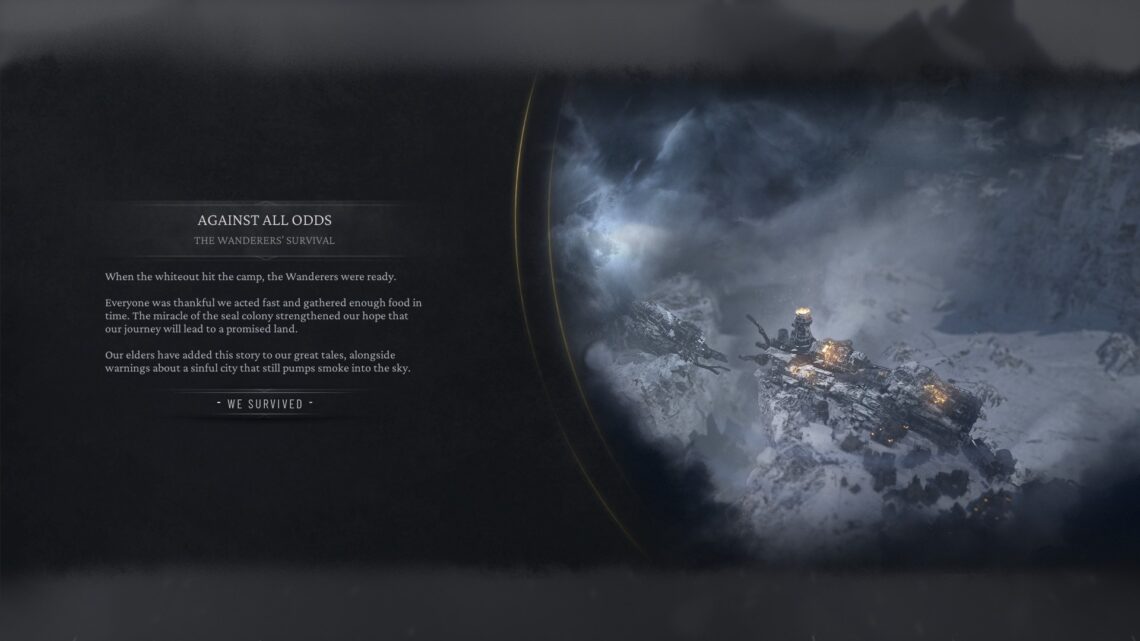
Not stopping there, the interface of Frostpunk 2 is also designed extremely beautifully, when the steam machines of part one are now replaced by ivory white “boards”, decorated with beautiful illustrations and explanations that are both thorough and extremely interesting to read and learn.
The exploration interface has also been replaced with a map with clear elevations and coordinates, beautifully illustrating important locations, as well as supply routes between the city and outposts.

Sound, similar to part one, is also a “strong” design point of 11 Bit Studios. The humming sounds of machinery, the whistling wind, the proclamations and urgings of part one are also back and more powerful than before, with more diverse, catchier sounds and more clearly depicting specific events, such as the promulgation of new laws or certain crises in the city.
The game’s music also plays a very important role in creating a very unique game feel, balancing very well between causing pressure and anxiety for the player, while still maintaining an epic and heroic atmosphere – even though the game really doesn’t have any truly memorable music like “The City Must Survive”.
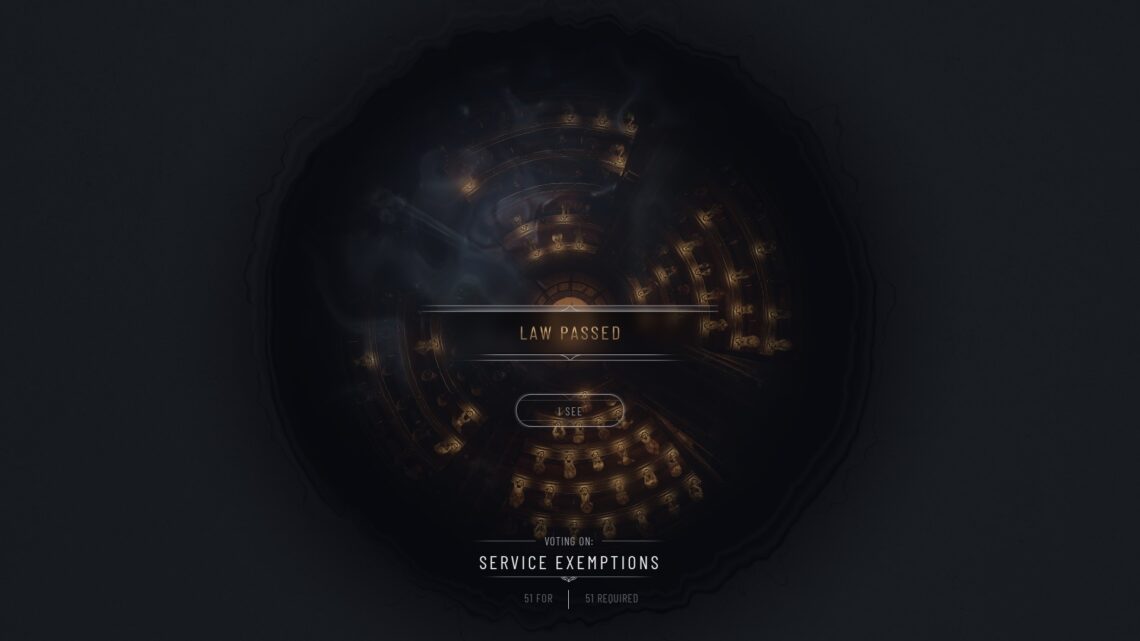
However, the sound design of the parliament is where the “quintessence converges”. The image of each parliamentarian is depicted in detail, through the arguments and discussions they bring up, and through the way the game interface suddenly condenses so that players “hold their breath” to see if a certain law of theirs will be passed, and certainly the feeling of achieving “just enough” 51 votes to pass a law, is the most “high” feeling that the game brings!
Frostpunk 2 ‘s city parliament is arguably the game’s most pivotal, core mechanic, and the 11 Bit Studios team has gone to great lengths to design it into an extraordinary icon, for an extraordinary game.
Frostpunk 2 is bigger, more massive, and much grander than the first one, and the game’s audio-visual-reading experience reflects those elements beautifully.
